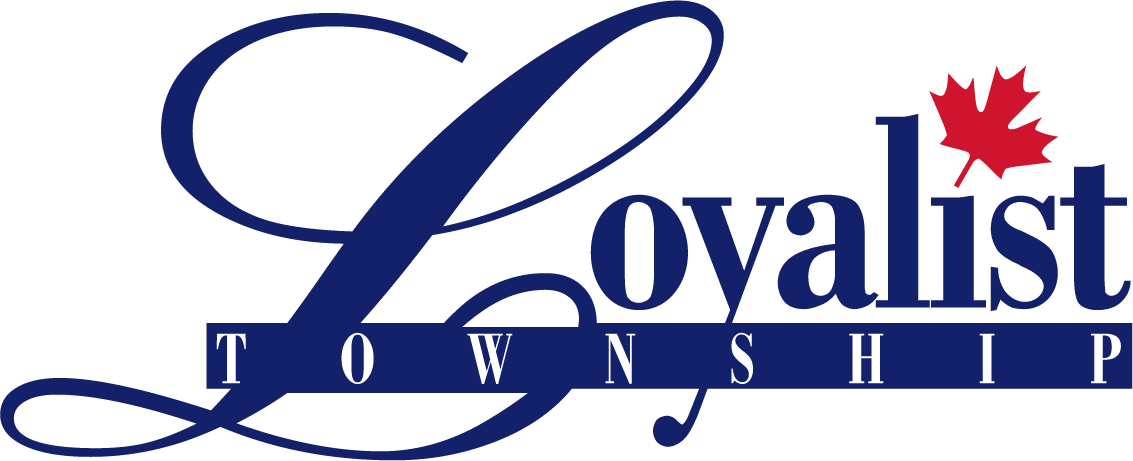Before the Township can give approval for new subdivisions or commercial/industrial site plans, we must show that our water and sewage systems have the capacity to convey and treat the demand that will be created. This is required by provincial law. A recent capacity assessment of the Amherstview sewage treatment plant shows that, while we may pursue upgrades to improve various steps in the treatment train, we do not need to undertake a major expansion at this time or in the near future.
Sewage Treatment
Sanitary sewers carry wastewater from your household plumbing – toilets, sinks, taps, washing machines - to the Township's sewage treatment plants. At the sewage plant we treat it with mechanical processes, chemicals, good bacteria, and UV light before it gets returned to the natural environment. This is all done in compliance with our operating permits from the Ministry of the Environment, Conservation, and Parks.
Loyalist Township has two sewage treatment plants:
-
Bath Sewage Treatment Plant receives and treats sanitary sewage from the village of Bath and from Correctional Services of Canada's Millhaven and Bath Institutions;
-
Amherstview Water Pollution Control Plant receives and treats sanitary sewage from Amherstview and Odessa.
Sewage reports
We present a report each year to Council about our sewage treatment plants. The Sewage Treatment Facilities 2024 Annual Report was received by Council in March 2025.
Sewage treatment questions
I read that there are so many new houses being built that the sewage plant can't keep up.
What causes odours from the sewage treatment plant?
Municipal wastewater treatment is a complex series of steps that rely on mechanical, bacterial, and chemical processes to function properly. When the plant is functioning optimally, there should be little odour produced.
To keep all the processes working the way they should, sometimes we need to carry out preventive maintenance tasks which can release odours from the plant. The picture below shows one of the aeration cells at the Amherstview plant. When the aeration cell is operating it's filled to near the top with liquids. In the picture, the liquids have been drained down so our Utilities operators can clean out the solids that accumulate in the lower level of the tank. This task takes place once a year in each of the aeration cells.
Doing regular maintenance helps us avoid very costly, unexpected emergency repairs. Usually the maintenance tasks are short-lived (no more than a few days). They're also scheduled for weekdays, meaning there shouldn't be unpleasant effects on weekends and minimal effects in the evening.
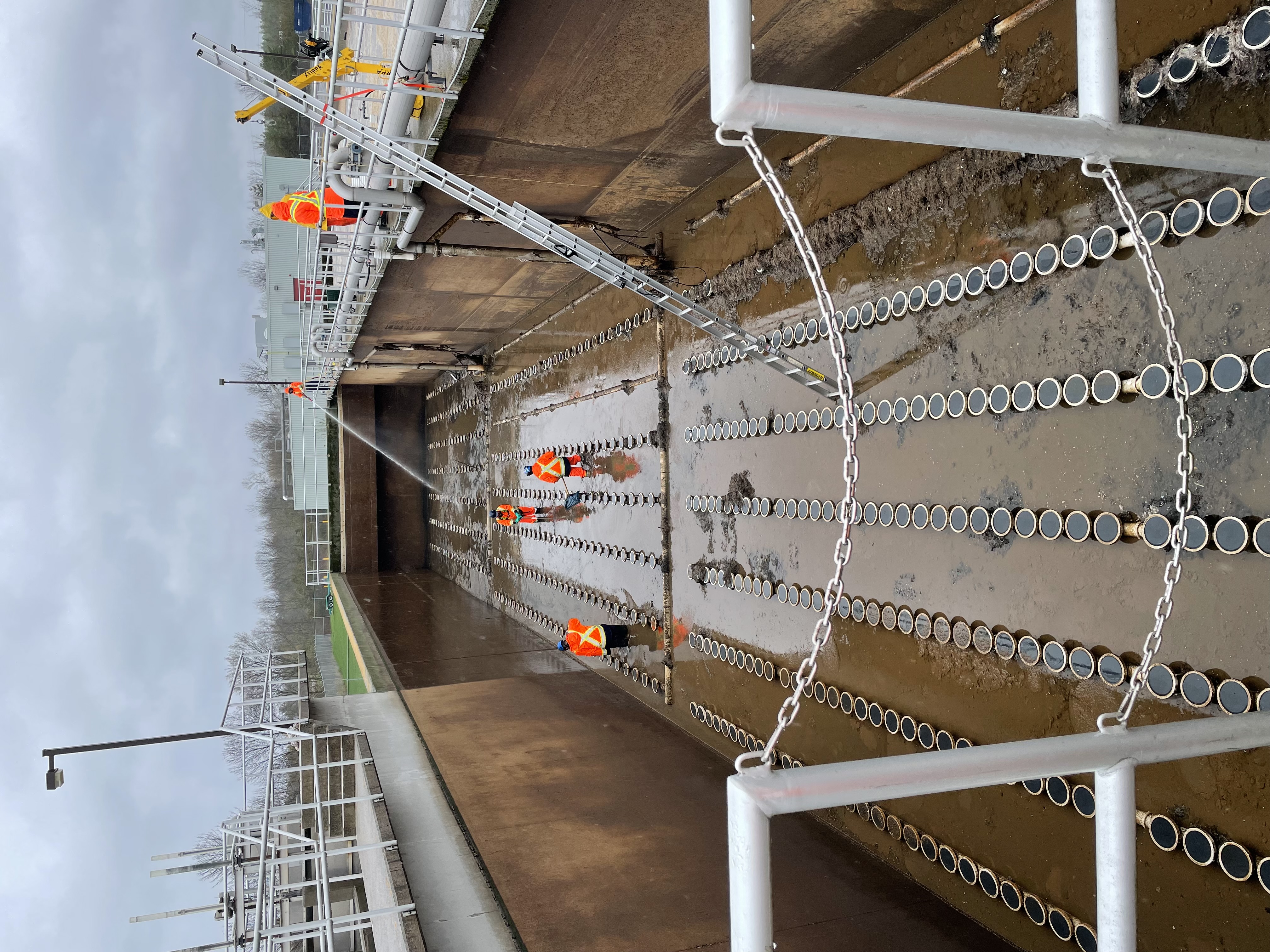
Changing seasons can also affect the plant's processes, usually at the onset of spring and the arrival of fall. Vegetation in the wetland and the bacterial processes "awaken" in the spring and "die back" in the fall. Both are temporary, and correct themselves in short order.
What should I do if there's an odour from the sewage plant?
If you become aware of a significant odour in your neighbourhood that you believe is from the sewage plant, please call us at 613-386-7351, ext. 103# during office hours; or after hours, send us an email with details of the issue so we can investigate. Please be as detailed as you can, with information about where and when you are experiencing the odour. It is challenging to try to identify the source of an odour several days after the fact, so prompt action on your part will help us address the situation effectively.
Can you tell me more about the sewage treatment processes?
We love talking about this!
Mechanical:Mechanical processes include things like the pumps that move wastewater to and through the plants, and screening that helps remove things that shouldn't be in the wastewater (such as plastics, rags, wipes) before they enter the plant. Aeration systems make bubbles in big aeration tanks. We also apply heat to the biosolids (also known as "sludge") that come out of the treatment plant, to treat pathogens before the sludge is hauled away.
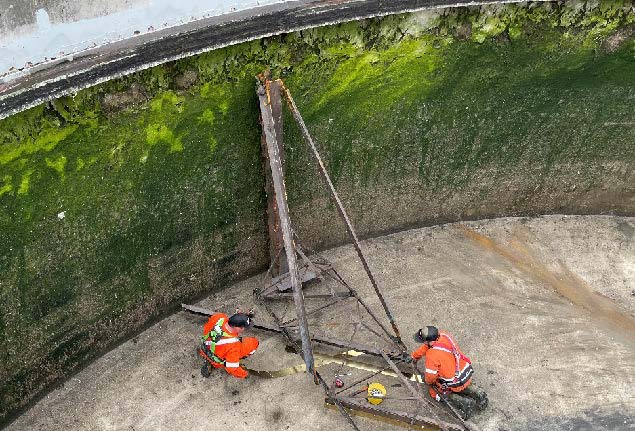
Bacterial: Active sewage treatment at our plants is about "raising bugs"! We rely on billions of happy bacteria that digest and break down the organic materials in the wastewater. If something starts to get out of balance, the bugs can suffer. It takes time, effort, knowledge, and sometimes consultation to bring the process back to its usual effective performance.
Chemical: There are different chemicals that can be used in sewage treatment, depending on the type of plant. The ones we use most are one that thickens the sludge, and one that helps remove phosphorous from the wastewater.
Passive: In Amherstview we also have sewage lagoons, which are big ponds where a lot of the liquids that have left the plant (called the "effluent") hang out for a while to be exposed to the sun. The lagoons are connected to each other in a series, and as the effluent flows slowly from one to the next, UV rays continue to treat it.
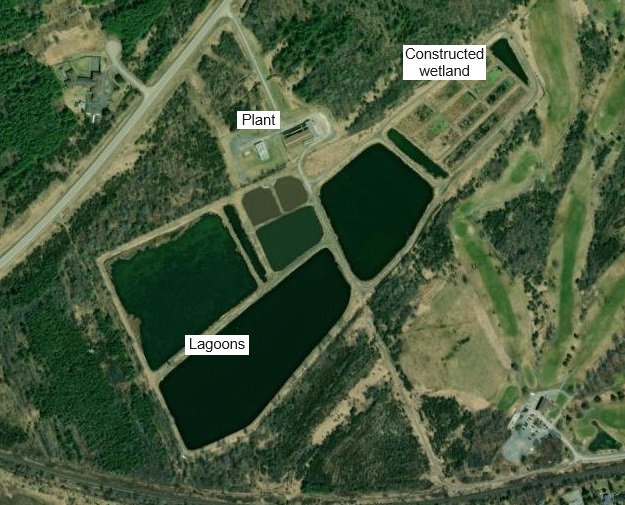
It also flows through a wetland (which we built!). We can control the water level in the wetland, which lets us adjust how fast or slow the effluent moves through it. Going through the constructed wetland reduces the pH level of the effluent before it finally gets released back into the environment, fully treated and safe. The wetland is home to lots of birds and other wildlife.
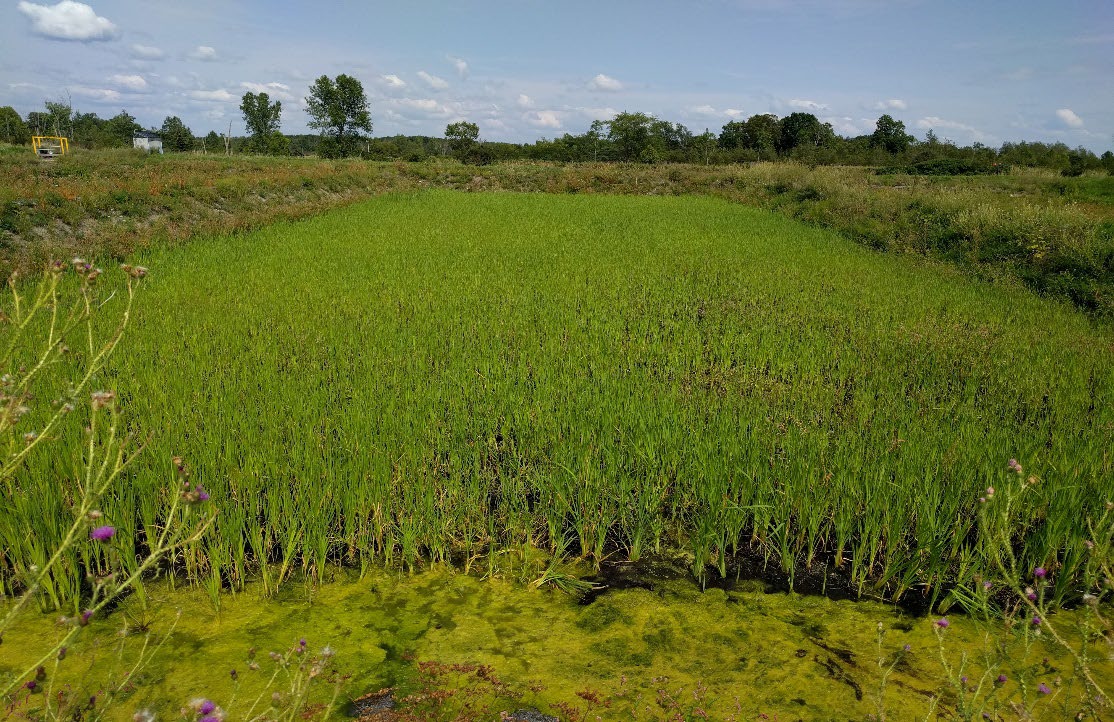
In Bath where we don't have quite as much space, we expose the effluent to big UV lights, which is the last step before the safe final effluent gets discharged to Lake Ontario.
We also have powerful equipment and software that is continually monitoring and analyzing each of these steps, and our experienced Utilities operators know how to identify trends and make adjustments so the plant continues to function optimally.
If you want to know even more (or just really like technical details), check out our annual sewage report.
Contact Us
Loyalist Township
Box 70, 263 Main Street
Odessa, Ontario K0H 2H0
Tel: 613-386-7351
info@loyalist.ca
Sign up to our Newsletter
Stay up to date on the Township's activities, events, programs and operations by subscribing to our eNewsletters.
